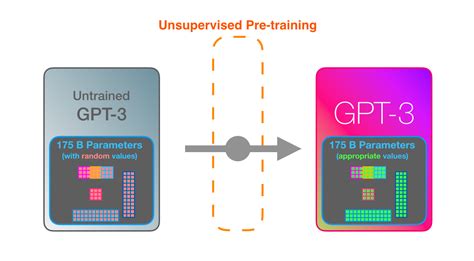
Understanding AI Model Parameters
Demystifying the Scale and Implications of AI's Billions of Parameters

Key Takeaways
- Parameters are the foundational elements that determine an AI model's learning capacity and ability to perform complex tasks.
- A higher number of parameters can enhance model performance but introduces challenges such as increased computational demands and risk of overfitting.
- Balancing parameter count with data availability and computational resources is crucial for developing effective and efficient AI models.
What are Parameters in AI Models?
In the realm of artificial intelligence (AI) and machine learning, parameters are the internal variables that a model learns and adjusts during its training process. These parameters primarily consist of weights and biases that define how the model processes input data to generate predictions or outputs. Weights represent the strength or importance of connections between different parts of the model, while biases allow the model to shift its output by a constant value, enabling it to make more accurate predictions.
Model Complexity and Capacity
The number of parameters in an AI model is a key indicator of its complexity and capacity to learn from data. Generally, a higher number of parameters signifies a more complex model capable of capturing intricate patterns and relationships within the training data. For example, early models like GPT-3 boast 175 billion parameters, while more advanced models such as GPT-4 reach up to approximately 1 trillion parameters. This substantial increase in parameter count allows these models to generate highly nuanced and human-like text, demonstrating an enhanced understanding of language nuances and contexts.
Trade-Offs of Large Parameter Counts
Overfitting
One of the significant trade-offs of increasing the number of parameters is the risk of overfitting. Overfitting occurs when a model becomes too tailored to the training data, capturing noise and specific patterns that do not generalize well to new, unseen data. This results in diminished performance when the model is applied to real-world scenarios, undermining its predictive capabilities.
Computational and Resource Demands
Larger models with billions or even trillions of parameters demand substantial computational resources for both training and deployment. Training such models requires advanced hardware, including high-performance GPUs or TPUs, extensive memory, and significant amounts of electricity, which can lead to increased operational costs and environmental impact due to higher energy consumption.
Manageability and Complexity
With an increasing number of parameters, models become more challenging to manage, fine-tune, and deploy effectively. The complexity associated with larger models can make them harder to interpret and audit, posing challenges in achieving transparency and accountability in AI practices.
Energy Consumption
The energy demands of training and running large AI models are considerable. High energy consumption not only translates to higher operational costs but also raises concerns about the environmental sustainability of developing increasingly large-scale AI systems.
Practical Implications for Users and Developers
Performance vs. Resources Trade-Off
For developers and users, the number of parameters in an AI model directly impacts its performance and the resources required for its operation. While models with a higher parameter count can achieve superior accuracy and perform better on complex tasks, they also necessitate more substantial computational power and memory resources, leading to slower response times and higher costs associated with training and inference.
Efficiency of Smaller Models
Smaller models, with fewer parameters, like Gemini Nano with 1.8 billion parameters, are designed for efficiency and can perform well on specific tasks even when deployed on devices with limited resources. These models strike a balance between performance and resource consumption, making them suitable for applications where computational resources are constrained.
Deployment Considerations
Deploying large AI models requires careful consideration of infrastructure capabilities. Models with billions of parameters are often hosted on powerful servers or cloud platforms to handle their computational demands. In contrast, smaller models can be deployed on local devices, facilitating broader accessibility and integration into a variety of applications.
The Diminishing Returns of Increasing Parameters
While increasing the number of parameters in AI models generally leads to improved performance, the relationship is not strictly linear. Beyond a certain point, adding more parameters can result in diminishing returns, where the incremental performance gains become marginal compared to the additional computational and resource costs. Optimizing parameter count involves finding a balance that maximizes performance improvements while minimizing resource consumption and complexity.
Applications of Large Parameter Models
Large AI models with billions of parameters find applications across various advanced domains, including natural language processing (NLP), image recognition, and complex decision-making tasks. Their ability to understand and generate human-like text, recognize intricate patterns in images, and perform sophisticated reasoning tasks makes them invaluable in areas such as virtual assistants, autonomous systems, and content generation.
Comparative Overview of AI Models by Parameter Count
| Model | Parameter Count | Primary Applications | Performance Highlights |
|---|---|---|---|
| GPT-2 | 1.5 billion | Text generation, language understanding | Capable of generating coherent and contextually relevant text |
| GPT-3 | 175 billion | Advanced text generation, conversational agents | Improved contextual understanding and more nuanced language generation |
| GPT-4 | 1 trillion | Complex reasoning, sophisticated language tasks | Highly nuanced and human-like text generation with better understanding of context |
Conclusion
The number of parameters in an AI model serves as a critical indicator of its complexity, learning capacity, and potential performance. Models with billions or trillions of parameters can capture and process intricate patterns in data, leading to more accurate and human-like outputs across various applications. However, this increased capacity comes with significant trade-offs, including heightened computational demands, greater energy consumption, and challenges in manageability and transparency. Developers and users must carefully balance the benefits of larger models with their associated costs and practical considerations to develop effective and sustainable AI solutions.
References
Last updated January 16, 2025